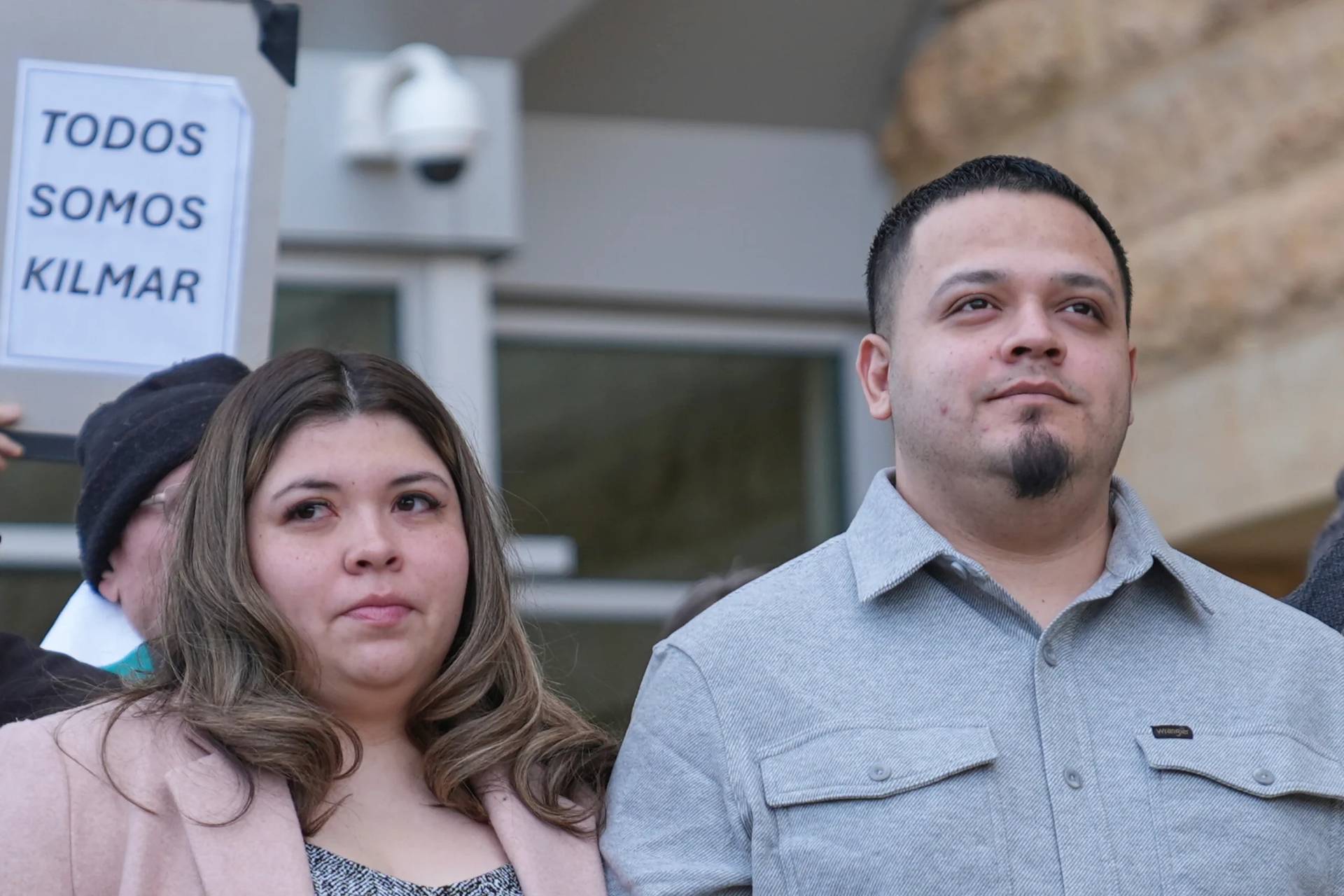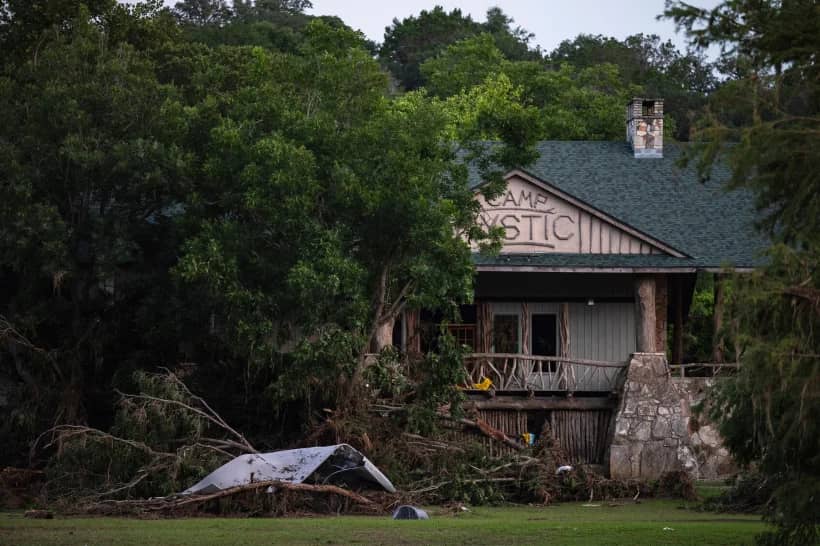LOUISVILLE, Kentucky — As astronaut Neil Armstrong took mankind’s giant leap onto the surface of the moon 50 years ago, 650 million people watched and listened to the televised broadcast via the Houston Space Center.
At the same time, a couple of young men at a home in Okolona, a suburb of Louisville, received crackling transmissions directly from the moon.
The NASA astronauts didn’t know it, but WHAS radio technician Larry Baysinger and his journalist friend Glenn Rutherford had tapped the frequency of the 12-watt radios — walkie talkie-type communicators — used by Edwin “Buzz” Aldrin and Armstrong on the moon’s surface.
“We knew we couldn’t decode what was going to the command module, but Larry had this idea. What if we listened to them? They were just using VHF radio,” said Rutherford in an interview with The Record, newspaper of the Archdiocese of Louisville.
The two listened — amazed by their success — as the astronauts spoke to President Richard Nixon and remarked on the play of shadows on the lunar surface.
Rutherford and Baysinger ended up with about 35 minutes of recordings that night, but they nearly missed it all because of a cloudy sky.
The men in their 20s had been preparing for more than a year. They buried 6,000 square feet of copper plating in Baysinger’s backyard to ground the equipment. They fashioned an antenna from chicken wire and aluminum.
The radio receiver they used came from a Korean War tank. Baysinger, who was unavailable for an interview, found the 20-year-old equipment at an Army surplus store and made some adjustments, said Rutherford.
On the night of the landing, the duo realized they hadn’t considered the effects of a cloudy night, which obscured the moon and made it difficult to point their home made antenna in the right direction.
“It was the simplest thing,” said Rutherford. “You had to aim that antenna at the moon.”
They tried and tried to find the signal. They were watching the landing on TV, nearly giving up when Rutherford went back for one more try.
“I was depressed. Nixon was about to make his call. I went back in to give it one more shot. I hunted for the signal.”
“All of a sudden I heard a voice. I said, ‘Larry, I think I hear something.'”
They listened to the president’s call and other back and forth discussions of the astronauts. The same conversations were televised for all to hear, but the voices they heard came directly from the moon across 250,000 miles to Okolona.
Rutherford, a former editor of The Record, who currently serves as editor emeritus, was a reporter for the local Courier-Journal daily newspaper during the moon landing. He wrote a story about the experiment a few days later.
He described their “back-pounding, handshaking, head-rubbing jubilation.” And he noted their next rookie mistake.
“During the jumping, whooping and hollering, no one checked the tape recorder. And sure enough, just as Edwin Aldrin was describing how his vision was impaired when he walked out of the sun into the shadows, the recorder ran out of tape,” Rutherford wrote.
They quickly installed a new reel and recorded 35 or so minutes of chatter from the moon’s surface.
Baysinger was the inventor and brains behind the endeavor, said Rutherford, adding that he was just along for the ride — and very excited to be there.
“Larry is one of the smartest guys I know. It was one of the happiest days of my life and I know it’s one of the happiest days of his life,” Rutherford said.
From the beginning, he said, they were just two curious guys.
“We wanted to hear it ourselves,” said Rutherford with a laugh. “We thought they would say something to one another that the government wouldn’t share.”
Since then, few have thought about the Okolona listening station, aside from those involved — until Rutherford mentioned it to his friend Chris Graney, a professor of physics and astronomy at Jefferson Community and Technical College.
Graney, a self-described skeptic, said he began to research the claim. Then, he listened to the tapes.
“It’s a remarkable thing. There are about 17 minutes of good recording that have survived these 50 years,” he said. “It’s full of static, but it’s obviously there. I play that tape and the NASA stuff — they’re the same thing. It’s cool.”
For Graney, the Okolona listening station is proof against conspiracy theories that claim the moon landing was faked.
“For something to be a thing in science, it has to be reproducible. With Apollo 11, all the information about the moon landing comes from ‘the government,’ ” he noted. “People who independently heard them on the moon — that’s reproducible.”
“If you had multiple Glenn and Larry’s, it would be harder to have conspiracy theories,” he said. “It’s a local science thing, a thing as best we can tell happened nowhere else.”
What the duo did the night of July 20, 1969, was good science, he added.
“This is the way most science comes — people working with limited resources and their brains with an idea. They just wanted to know, so they tried.”
While Graney and Rutherford are both devotees of science, they are also men of faith.
“One of the things that attracted me to the Catholic Church was the unyielding willingness to see the validity of evolution and the fact that the Church promotes science,” said Rutherford, noting that the Vatican operates its own observatory.
Graney, in fact, works for the Vatican Observatory. He is the editor of the Vatican Observatory Foundation website’s faith and science pages at www.vofoundation.org. He also blogs regularly on the site about all manner of science and faith.
– – –
McAllister is editor of The Record, newspaper of the Archdiocese of Louisville.
Crux is dedicated to smart, wired and independent reporting on the Vatican and worldwide Catholic Church. That kind of reporting doesn’t come cheap, and we need your support. You can help Crux by giving a small amount monthly, or with a onetime gift. Please remember, Crux is a for-profit organization, so contributions are not tax-deductible.
















